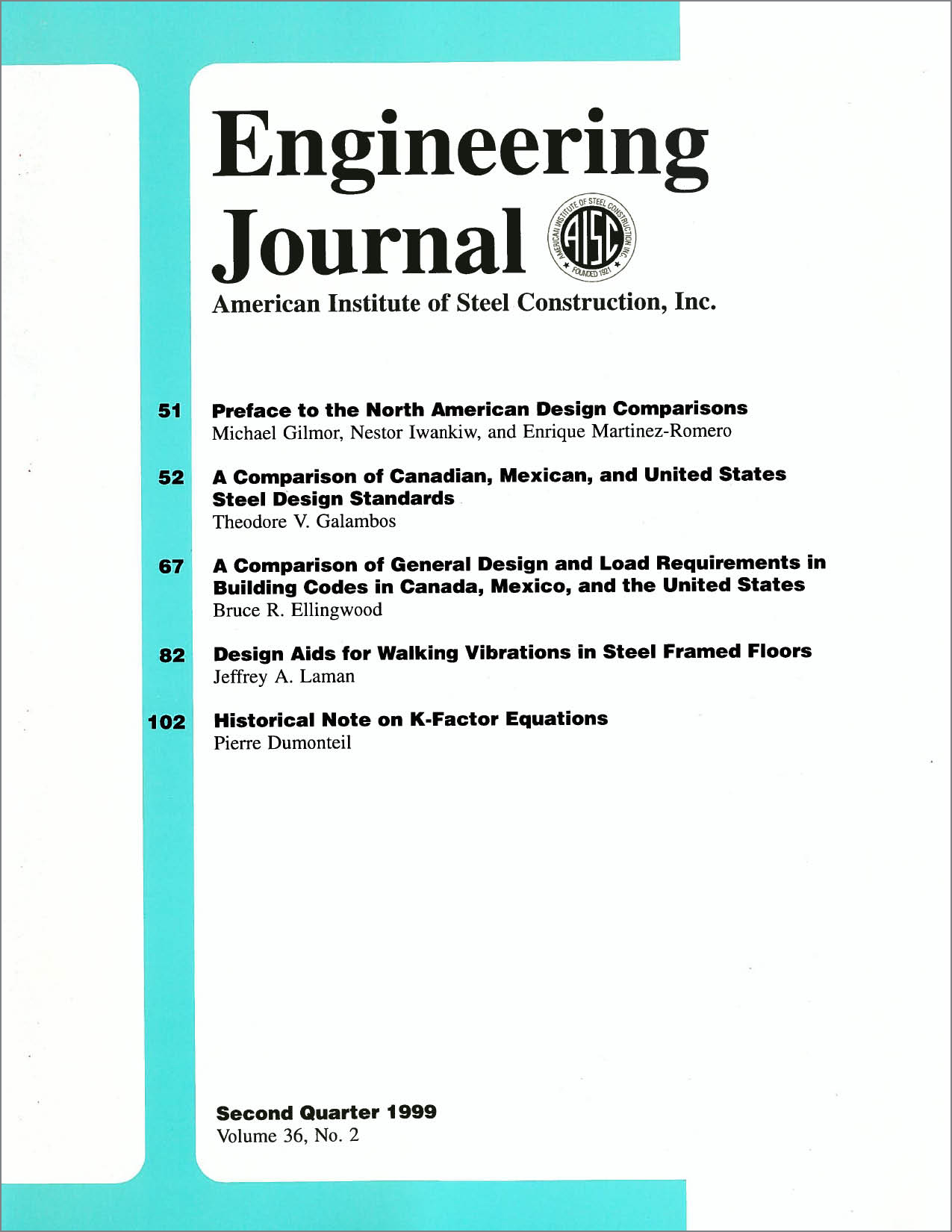A Comparison of Canadian, Mexican, and United States Steel Design Standards
DOI:
https://doi.org/10.62913/engj.v36i2.720Abstract
The steel design standards for buildings of the three countries of Canada, Mexico and the United States are compared in this paper. The special emphasis is on the criteria for the stability design of plates, columns, beams and beam-columns. It is shown that while the theoretical and experimental basis for all three codes is common, the final form of the criteria is not the same: different formulas are used for column, beams and beam-columns. Other differences arise from the fact that all three countries use different units. However, the designed proportions of the structural elements and structures are often not significantly different in final execution. Each code has advantage and disadvantages in its details of design. However, there appears to be no major obstacles to arriving at mutually satisfactory codes which are essentially interchangeable among countries.

